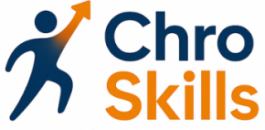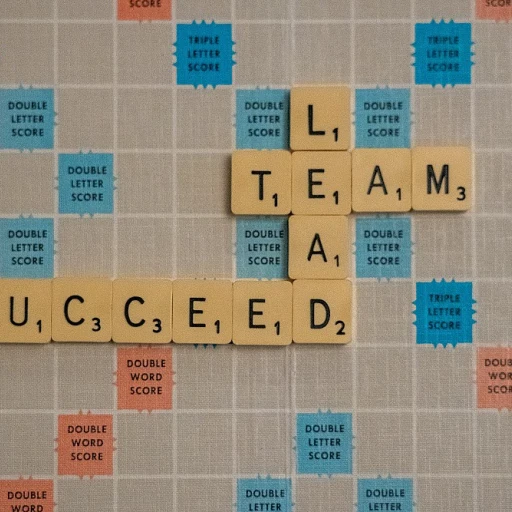
Understanding the Role of a CHRO
Exploring the Strategic Position of a CHRO
Understanding the role of a Chief Human Resources Officer (CHRO) is crucial, as they are vital leaders within an organization who shape the development and implementation of HR strategies that align with business objectives. They are responsible for overseeing all aspects of human resources management, which involves a wide array of duties ranging from talent acquisition to employee engagement. CHROs need to possess stellar leadership skills, as they guide a team of HR professionals, ensuring that collective efforts meet specific goals. This involves setting a clear development plan which includes measurable goals and providing timely feedback to improve performance. In addition to proper team management, CHROs contribute significantly to leadership development by crafting effective strategies that enhance the capabilities of current and potential leaders within the organization. This is vital for long-term business success, fostering an environment that supports continuous personal development and growth among team members. Decision making is another crucial aspect that defines a CHRO's duties. Using emotional intelligence, CHROs make informed decisions that impact employee work experience positively, which in turn boosts overall employee engagement. Considering the fast-paced nature of the business environment, CHROs work diligently, sometimes focusing on ambitious time-bound goals to ensure that the organization remains competitive. For those interested in a more comprehensive understanding of the duties and opportunities within this role, further insights can be gleaned from resources such as this piece on the role of a growth consultant that provides a nuanced view of growth opportunities within HR leadership unleashing potential.Key Skills for CHROs in Leadership Development
Essential Competencies for Elevating Leadership Development
In the quest to craft effective leadership development goals, understanding the core skills required for a Chief Human Resources Officer (CHRO) is crucial. As CHROs play a pivotal role in shaping leaders within an organization, they need to be equipped with specific skills that enhance their capacity to develop and nurture leadership qualities in others.- Emotional Intelligence: A CHRO must possess high emotional intelligence to understand and manage emotions effectively. This skill is vital for creating a supportive environment and providing constructive feedback to team members, which is essential in fostering leadership growth.
- Strategic Vision: Being able to see the bigger picture allows CHROs to align leadership development goals with the organization's long-term ambitions. A strategic vision helps in crafting a leadership development plan tailored to meet both current and future organizational needs.
- Effective Communication: This skill is key in articulating the objectives of leadership initiatives, ensuring that team members understand their roles in achieving developmental goals. Strong communication also aids in delivering feedback and ensuring alignment with the overall development plan.
- Decision Making: CHROs need to make informed decisions to steer leadership development programs in the right direction. This involves analyzing data, identifying gaps in leadership skills, and implementing necessary changes to the development strategy.
- Employee Engagement: Encouraging active participation from team members in the leadership development process is important. By fostering a culture of engagement, CHROs can ensure that the leadership initiative is continuously supported and improved.
- Feedback Mechanisms: Creating avenues for receiving and providing feedback is crucial for ongoing improvement in leadership development. CHROs should implement measurable track systems to regularly assess and refine the development plan.
- Time Management: Setting time-bound goals and efficiently managing time ensures that development objectives are achieved within a specified timeframe. This discipline is necessary for the smooth execution of leadership programs and maintaining momentum.
Setting Leadership Development Goals
Setting Clear and Achievable Objectives
Crafting precise leadership development goals is fundamental for a Chief Human Resources Officer (CHRO). These goals must be clear, specific, and aligned with the organization's overall objectives. Utilizing the SMART goals framework—Specific, Measurable, Achievable, Relevant, and Time-bound—will help in setting realistic and attainable targets. For instance, if the aim is to enhance leadership skills in emotional intelligence, the goal might involve completing a specific training program in three months.Tailoring Goals to Individual Needs
Each leader within an organization brings unique skills and growth potentials. Therefore, it’s crucial to personalize development goals to cater to individual team members. A customized approach considers personal development ambitions alongside organizational objectives. This personalization not only fosters development but also enhances employee engagement and motivation.Aligning Goals with Organizational Vision
Leadership development goals should not exist in isolation. They must be aligned with the organization's long-term vision and strategy. This alignment ensures that as individual leaders grow and improve, they contribute effectively to the organization's broader mission. Setting these aligned goals requires a deep understanding of the business landscape and strategic organizational objectives.Setting Benchmarks for Success
Establishing clear benchmarks is crucial for tracking progress and measuring the effectiveness of leadership development initiatives. These benchmarks serve as indicators of success and enable CHROs to provide meaningful feedback and adjustments to the development plan as needed. Measurable track progress can help leaders to assess their advancement towards the desired leadership goals, allowing for continuous improvement and effective leadership within the team. By focusing on these aspects, you can create a robust framework that empowers leaders and enhances their ability to steer the organization towards success. For insights on addressing potential pitfalls in HR leadership, you might find it beneficial to explore understanding the leadership weaknesses in HR executives.Implementing Leadership Development Strategies
Developing a Strong Implementation Plan
Crafting and implementing a leadership development plan is pivotal for effective leadership. Learning to tailor these strategies within an organization is essential to guide leaders towards growth and success. A well-structured plan will help transform leadership goals into achievable outcomes, ensuring they align with the organization's business goals.- Set Clear and Specific Goals: Develop SMART goals—Specific, Measurable, Achievable, Relevant, and Time-bound—to ensure clarity and purpose. For instance, aim to enhance emotional intelligence in team members by organizing monthly workshops.
- Leverage Team Dynamics: Cultivate a collaborative environment by bringing together diverse leadership skills. Encourage leaders to work together, share feedback, and help each other grow, thus fostering a culture of continuous improvement.
- Invest in Personal Development: Prioritize personalized growth by offering training tailored to individual needs. This not only boosts employee engagement but also accelerates leadership development. Empower team members with the right tools, enhancing their decision-making skills.
- Track Progress and Adjust: Continually measure success through regular feedback and progress reviews. Evaluate how well leaders are meeting their goals within set time frames, such as three months, and make necessary adjustments to the development plan.
- Long-term Vision: Focus on sustainable development by setting long-term objectives, enabling leaders to visualize their growth trajectory. This approach will improve leadership skills steadily, aligning with the strategic direction of the organization.
Measuring Success in Leadership Development
Evaluating Progress and Outcomes
To effectively measure success in leadership development, it's crucial to establish specific criteria and track measurable progress over time. Setting goals that align with the organization's overarching plans and objectives will help ensure that leadership development initiatives are both relevant and impactful.- SMART Goals: Utilize SMART goals—Specific, Measurable, Achievable, Relevant, and Time-bound—as a framework to craft clear objectives. This approach ensures that both leaders and team members have a precise understanding of what is expected and can track progress effectively.
- Feedback Mechanisms: Regular feedback loops between leaders and their teams are vital. Encourage open communication to identify areas for improvement and recognize achievements. Constructive feedback not only aids personal development but also fosters a culture of continuous growth within the organization.
- Emotional Intelligence: The ability to gauge emotional intelligence plays a significant role in any leader's success. By evaluating how leaders manage their emotions and influence others, organizations can make informed decisions about further development needs.
- Employee Engagement: Monitor employee engagement as a measure of leadership efficacy. High engagement levels often translate to improved performance and job satisfaction, reflecting the success of leadership development efforts.
- Long-term Impact: While immediate results are valuable, assessing the long-term growth and sustainability of leadership improvements is equally critical. Identify key leadership skills that have strengthened over the course of three months or more and evaluate their impact on business outcomes.
Overcoming Challenges in Leadership Development
Addressing Common Obstacles in Leadership Development
Leadership development is a crucial component of any organization’s growth strategy, yet it often comes with its own set of challenges. As a Chief Human Resources Officer (CHRO), overcoming these obstacles requires a blend of strategic planning and adaptability. Here are some common challenges and strategies to tackle them effectively.
Aligning Development Goals with Business Objectives
One of the primary challenges is ensuring that leadership development goals align with the broader business objectives. This alignment is essential for fostering effective leadership that drives organizational success. To achieve this, CHROs must work closely with other leaders to understand the specific needs of the organization and tailor development plans accordingly. Setting SMART goals—Specific, Measurable, Achievable, Relevant, and Time-bound—can help in creating a clear roadmap for leadership development.
Engaging Team Members in the Development Process
Employee engagement is another critical factor in successful leadership development. CHROs must cultivate an environment where team members feel motivated to participate in their personal development. This can be achieved by providing regular feedback, recognizing achievements, and offering opportunities for growth. Encouraging team members to take ownership of their development plans can also lead to more meaningful progress.
Measuring the Impact of Leadership Development
Tracking progress and measuring success in leadership development can be challenging. It’s important to establish clear metrics and regularly assess the effectiveness of development initiatives. This could involve setting specific, measurable goals and using tools to track progress over time. Regular reviews and adjustments to the development plan will help ensure that it remains aligned with the organization’s evolving needs.
Adapting to Change and Overcoming Resistance
Change is inevitable, and resistance to it can hinder leadership development efforts. CHROs must be prepared to navigate these changes by fostering a culture of adaptability and resilience. This involves equipping leaders with the skills needed for effective decision-making and emotional intelligence. Providing examples of successful change initiatives can also help in overcoming resistance and promoting a growth mindset among team members.
By addressing these challenges head-on, CHROs can create a robust leadership development framework that not only meets the organization’s current needs but also prepares it for future growth.













